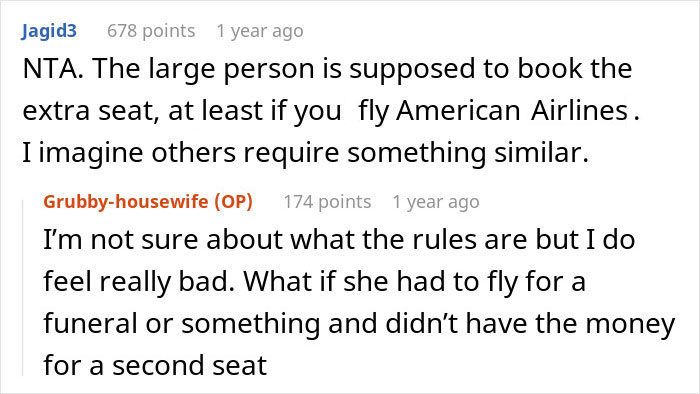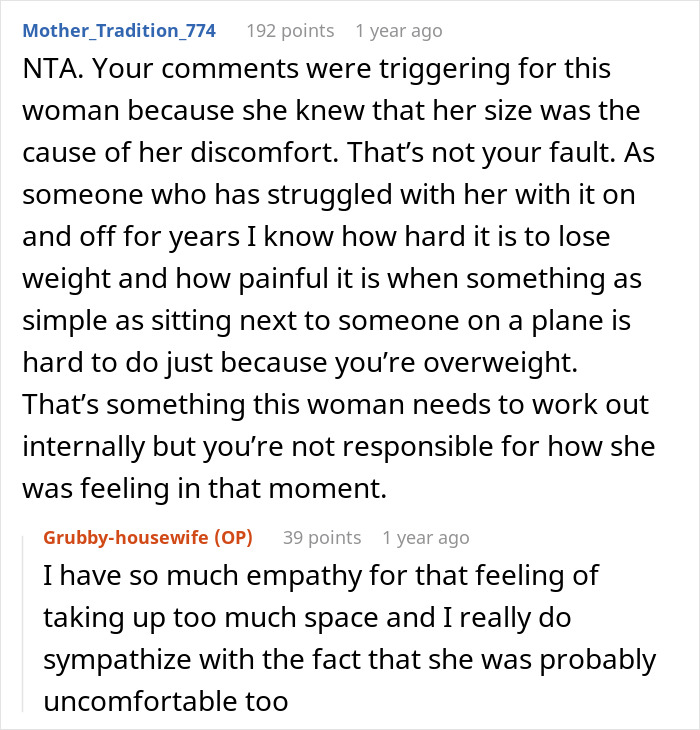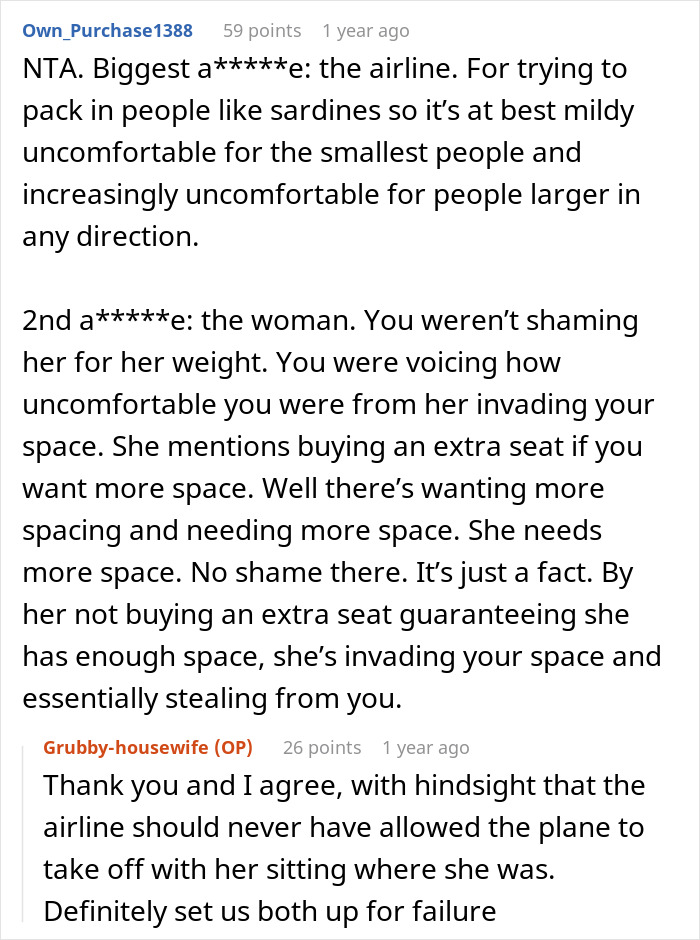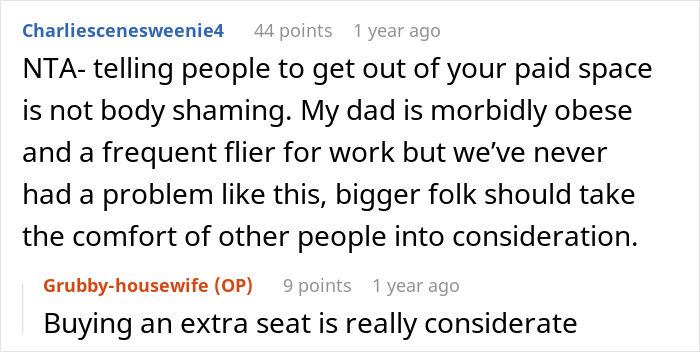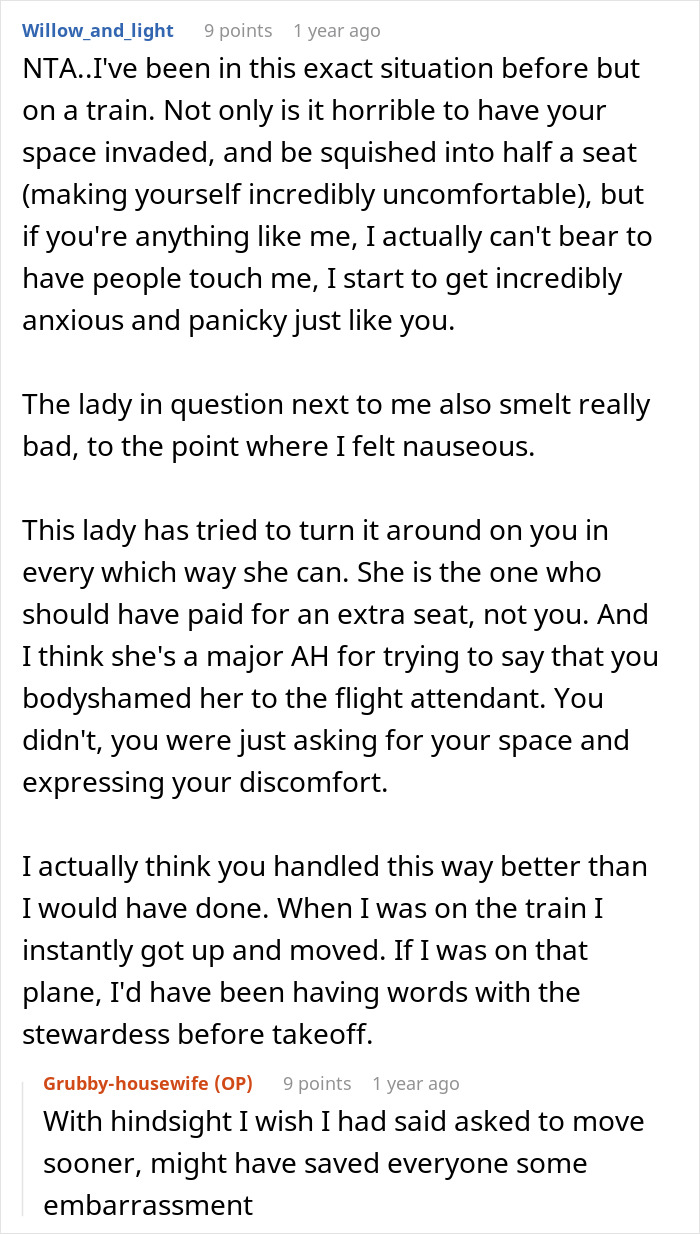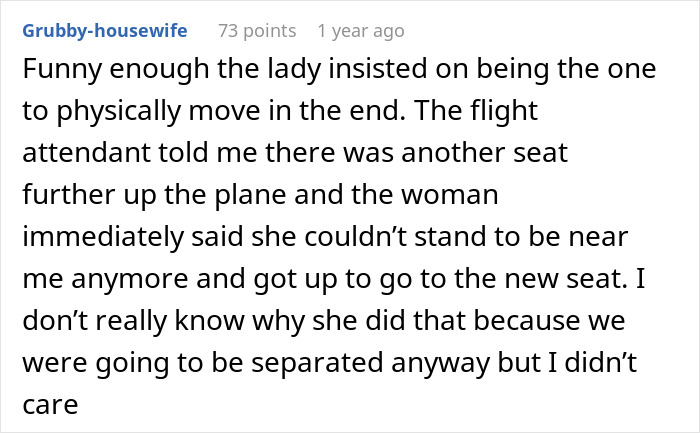Flying, no matter what size, can be anxiety-inducing for many people. However, plus-size individuals face even more obstacles when traveling, often denying them the opportunity to experience things commonly available to others.
One is airplane seating, which this flyer unexpectedly learned after neighboring a plus-size woman on an 8-hour flight. It was soon clear that the seat couldn’t accommodate her, as she was taking up more and more space. Struggling with claustrophobia, the person next to her asked for a new seat, causing mid-air AITA drama to ensue.
Plus-size people face many more obstacles while traveling
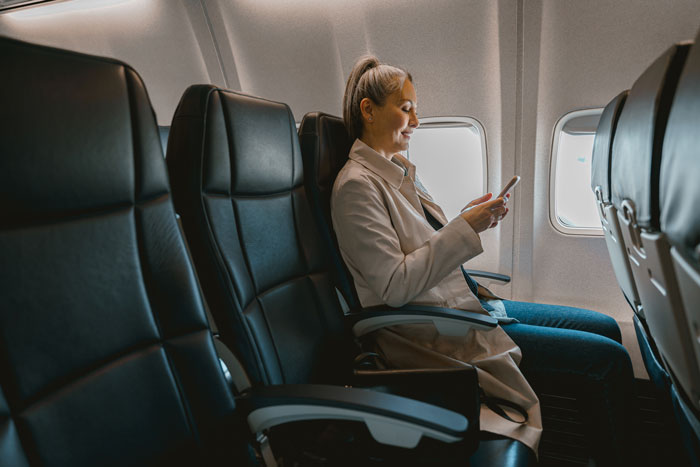
Image credits: friends_stock / Envato (not the actual photo)
This woman experienced it firsthand when the lack of space became a huge problem mid-air
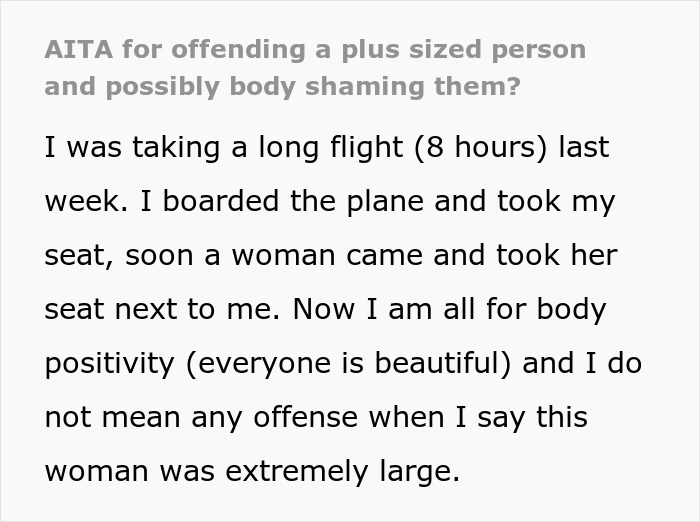

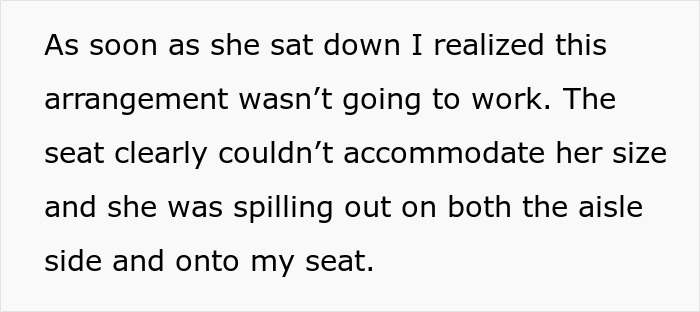
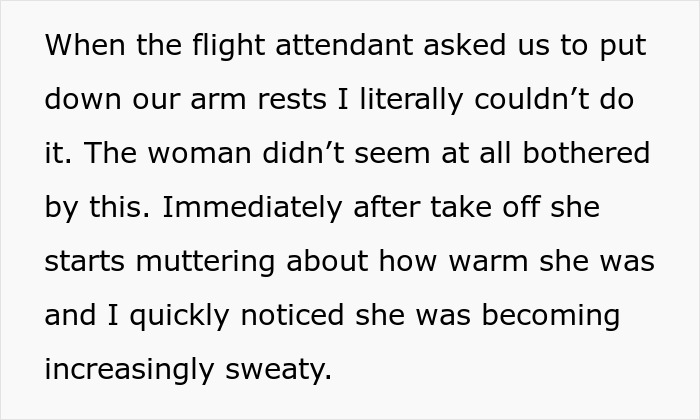


Image credits: MART PRODUCTION / Pexels (not the actual photo)

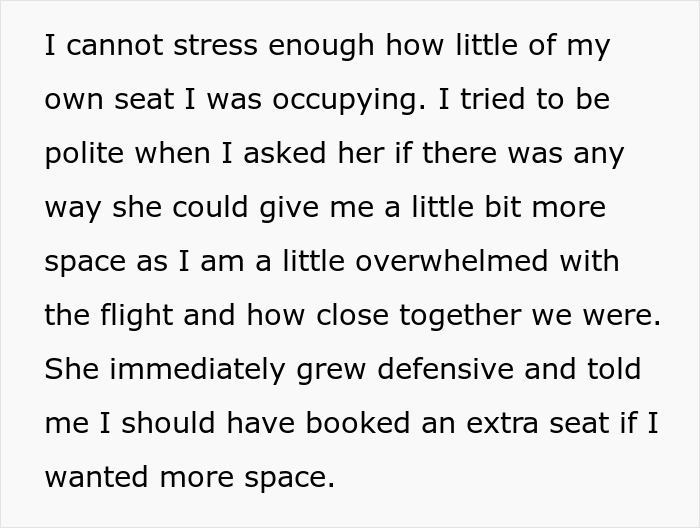

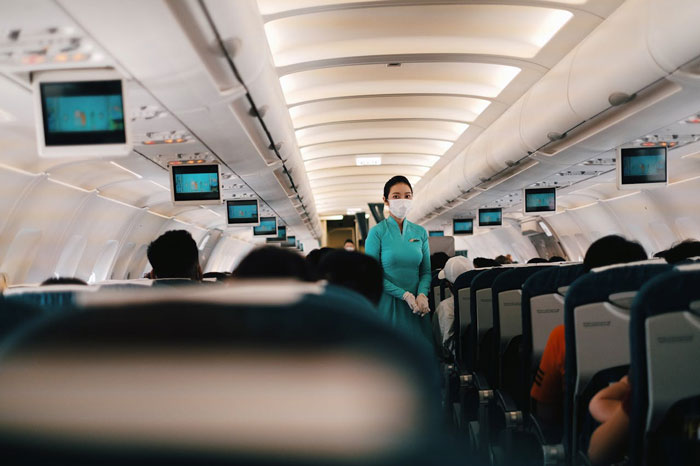
Image credits: Pew Nguyen / Pexels (not the actual photo)
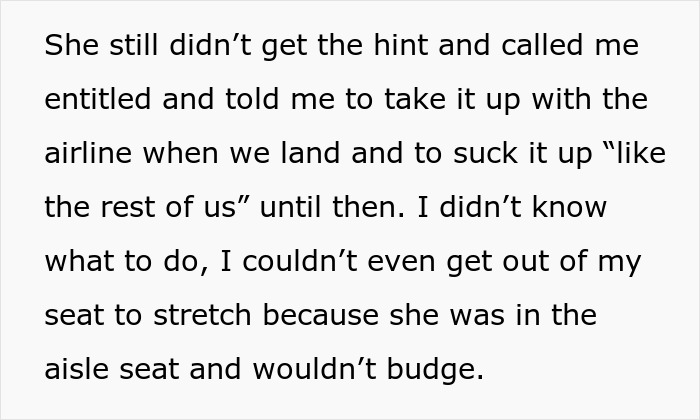
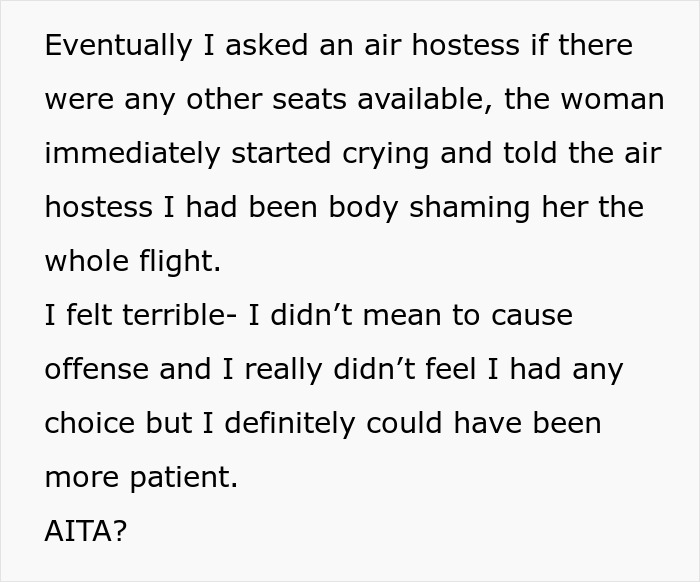
Image credits: Grubby-housewife
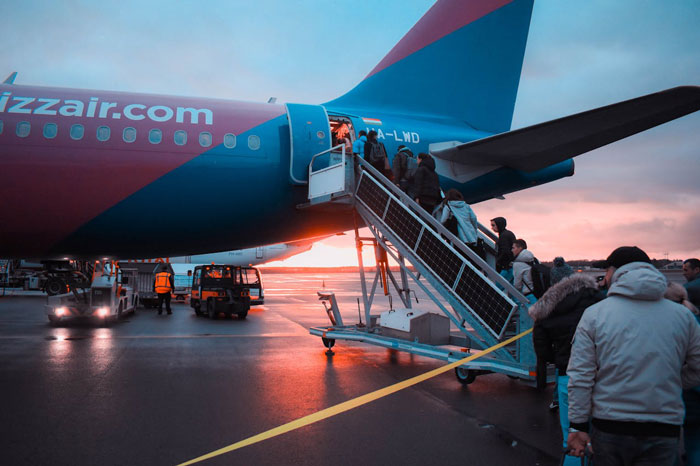
Image credits: Longxiang Qian / Pexels (not the actual photo)
Airlines can definitely put more effort into making flights accessible to everyone
Unfortunately, the truth is that the current policies for passengers who need more room have not kept up. According to National Geographic travel host and award-winning content creator Jeff Jenkins, airlines can definitely put more effort into making flights accessible to everyone. “We are still waiting on the FAA to give dimensions for standard seat sizes for each aircraft,” he says. “We hope that they listen to us and make seats wider.”
What makes this even more complicated is that every big airline has a different set of rules dealing with what the industry calls “customers of size.” The passengers are often left to figure them out on their own, often resulting in frustration for both the client whose seat is too small as well as their neighbors, who may feel that their personal space is being invaded.
To try and combat this issue, plus-size travel influencer Jae’lynn Chaney launched a petition in April 2023 urging the FAA to instruct all airlines to establish a comprehensive customer-of-size policy that prioritizes the comfort and well-being of all passengers.
“We need the policies to be a little bit more standardized,” Chaney tells CNN Travel. “At the bare minimum, we need every airline to have a policy that tells people of size how to navigate their airline.” As a result, all plus-size passengers would be appreciative of clearer rules, which would eliminate many misunderstandings.

Image credits: Sarah Chai / Pexels (not the actual photo)
The good news is that some airlines are taking steps in the right direction
What is gaining more attention is the idea that plus-size passengers should have a second seat. And they shouldn’t have to pay for it because their weight is a disability. Chaney is reassuring that they aren’t looking for any special treatment, only asking for the same respect that a thinner person gets from an airline.
“People with smaller bodies get to pay one fare to get to their destination,” she says. “And we have to pay two fares, even though we’re getting the same experience. If anything, our experiences are a little bit more challenging.”
The good news is that some airlines are taking steps in the right direction. Southwest is often the most popular among the plus-size travel community due to its customer-of-size policy. It allows passengers to pre-purchase a second seat when they make their reservation. The cost of the second seat gets refunded after travel.
On their website, the company indicates when a person should require extra room. “The armrest is the definitive gauge for a customer-of-size. It serves as the boundary between seats. If you’re unable to lower both armrests and/or encroach upon any portion of a seat next to you, you need a second seat.”
Chaney regularly shares many other tips on flying as a plus-size person on her TikTok account, and one thing that still surprises her is that a lot of individuals don’t know that seat belt extenders exist and that they’re all available on all flights. It might not be comfortable to ask others to accommodate your needs, especially when faced with unaware passengers or flight attendants. However, it has to be done in order to make travel accessible for everyone.
The author provided more information in the comments
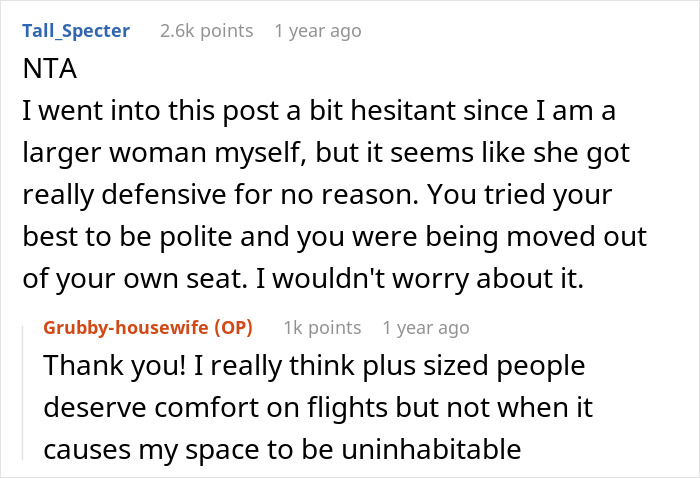
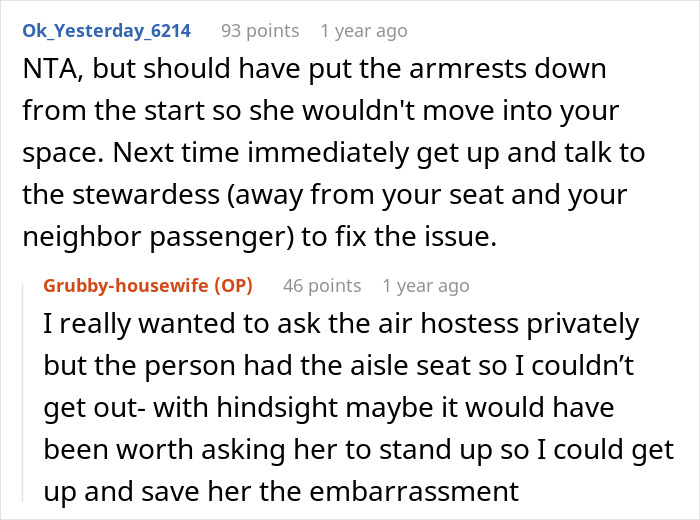
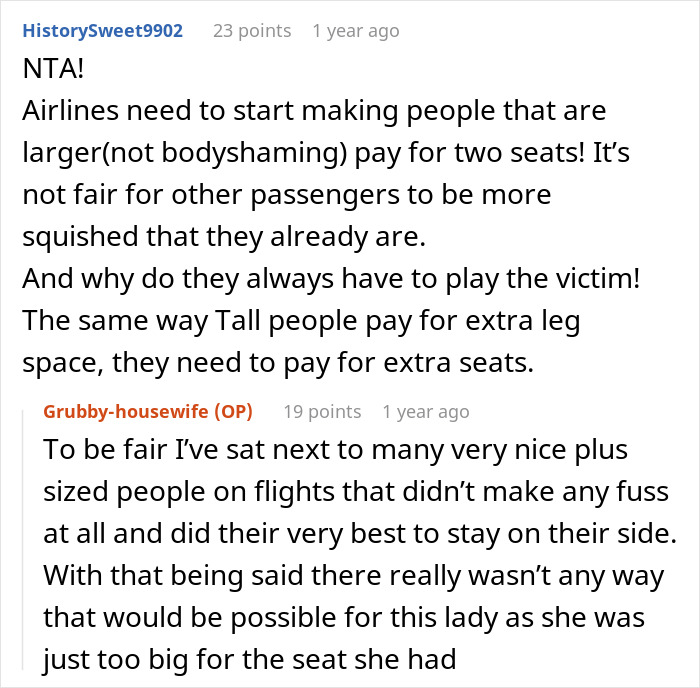
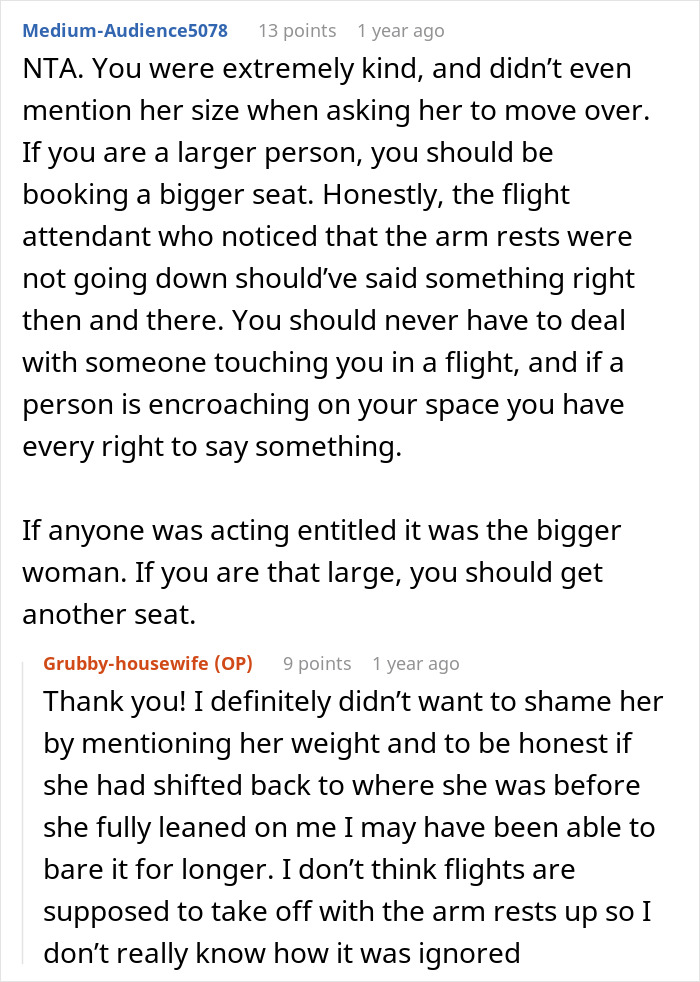

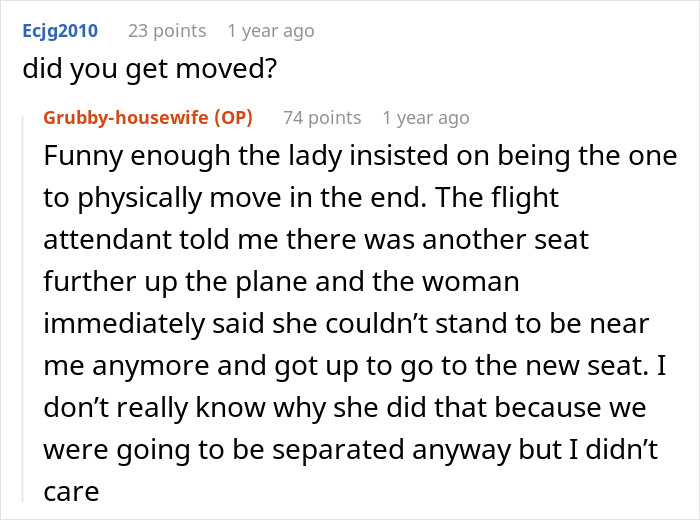
People believe that the woman handled the situation as best as she could
